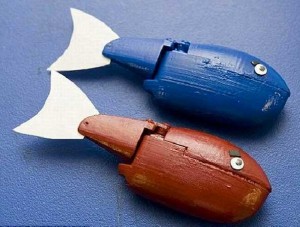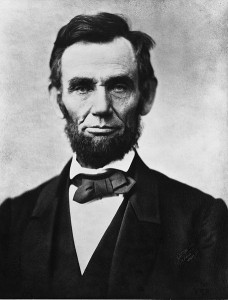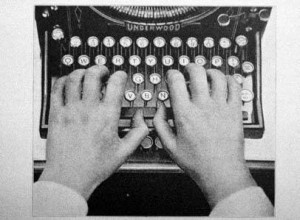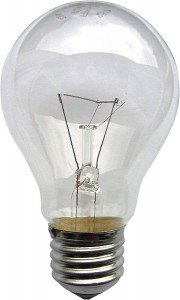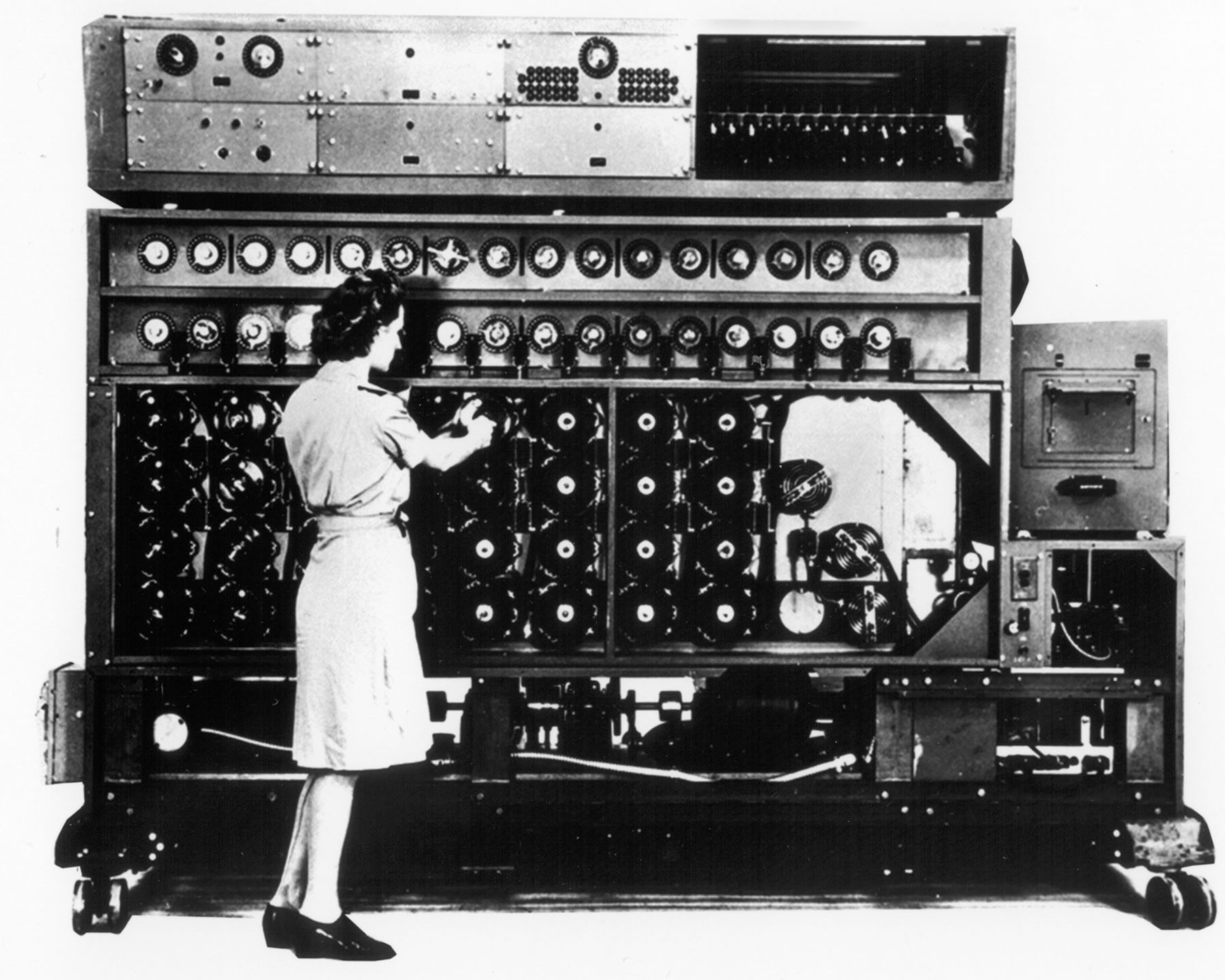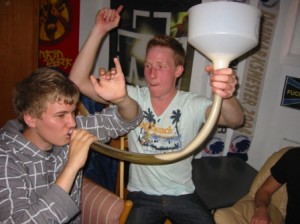…is having a former Presidential candidate and a talking head on a major cable outlet who believes that the Earth is 5,000 years old and that Creationism and not Evolution tells the story of humankind.
Tags: Mike Huckabee
Live Science has an article about Rome-born NYU professor, Dr. Maurizio Porfiri, who has created robot fish that can lead schools of real fish away from natural and man-made disasters. The real ones respond well to their bot brothers because the fake fish have a remarkable capacity to mirror movements seen in nature. An excerpt:
“Porfiri posited that if he could enforce leadership by an external member—in this case, a robot that actively engages the group—he could influence the direction and behavior of schooling fish. This could prove a life-saving advantage for marine populations in the event of oil or chemical spills or other natural disasters. Porfiri also envisions the ability to lead fish away from man-made dangers like turbines.”
••••••••••
No video footage yet of Dr. Porfiri’s fish in action, but scientists at Essex University are also working on robot fish:
Subcultures are wonderful. (Thanks Documentarian.)
Panties & Slips size medium – $1 (Upper West Side)
OK here’s the weird, though practical post of the week on Craigslist. My mother passed away leaving behind many clothes, (can you believe 73 belts) and her large panty collection. I have donated all the clothes to Housing Works but they don’t take panties. SO I have 7 white slips, 4 black, 27 black panties, 19 white,3 blue, 2 brown, 1 orange, 1 purple, 1 pink,1 frilly and 1 red one that says “you rock my boat” on the front of it. Mom was a piece of work. These are NOT fancy Victoria’s Secret panties. Seems like a shame to toss these when they should have some useful life left. Does anyone want all of these for $30? If I don’t get any response then I will offer them for free in few days and if no response then to the landfill they go.
A new twist, literally. Also: video of a New York breakdancer from 1898.
February Traffic Report (the most popular searches on Afflictor according to category):
Top 5 Famous People
- Muhammad Ali
- Truman Capote
- David Soul
- Serge Gainsbourg
- Chuck Close
Top 5 Non-Human Creatures
- Moth
- Tuatara
- Skunk
- Polar bear
- Elephant
Top 5 Inaminate Objects
- Dymaxion house
- Breadsticks
- Stretch Armstrong doll
- IBM PC
- Old trains
Top 5 Obscene Terms
- Japanese school girl panties
- Midgets with fat asses
- Transformers girls boob and ass inflation
- Snooki has to shit her pants
- Stripper photo with beagles painted on her chest
- Classic DVD: RoboCop (1987).
- Old Print Articles: Bicycle Troubles (1890s) + Female joggers (1902) + Roller coaster designer killed by roller coaster (1899).
- Classic Photographs: Life on Mulberry Street (1900) + Delmonico’s moves uptown (1902).
- Featured Videos: Mind-blowing Civil Rights panel + Water balloon placed on barbecue + William Tell filmed with high-speed camera + World’s largest contortionist + Robot Marathon in Osaka + Sacheen Littlefeather turns down an Oscar + Masdar City scraps plans for podcars + Russian performance artists kiss policewomen + Folding machine gun fits into back pocket + Gay Talese recalls heavy drinking at the New York Times + Transforming typewriters into computer keyboards + John Belushi’s SNL screen test + Swordsman battles shadows in Tokyo + Residents of London residential tower filmed in the elevator+ Skateboard larger than it need be + Luxurious bubble house + Basketball-playing robotic seal + Classical music composer dressed like a Viking + Francis Bacon documentary.
- Recently Posted on Craigslist: Drunk guy with pregnant wife selling cigarette butt + Selling VHS tapes of sex freaks + Give me a good idea so that I can make money + Trade places with a chubby, gassy woman + Will purchase macabre Victorian items + Move my film equipment and I will pay you beer.
- How to tell if someone is dead in 1902.
- Hunter S. Thompson classes up the Kentucky Derby in 1970.
- How Jack Dorsey created Twitter.
- How Whitfield Diffie created PowerPoint.
- What made Professor Amy Bishop go on a killing spree?
- Taking a vacation in Chernobyl.
- Homeless philosopher spreads “hate” in Berkeley.
- Sputnik’s success inadvertently aided U.S. computer development.
- A nun was the first female computer science Ph.D.
- Cheetah Bots will soon be chasing you.
- Advertising Bots are already chasing you.
- David Foster Wallace explains why lobster was once only eaten by the poor.
- Isaac Asimov explains American democracy.
- Kevin Kelly defines technology, broadly.
- Bio-printer creates working human kidney.
- The long-term future of AI may not be heaven or hell.
- How to entertain a baby in 1900.
- Who will still be famous in 10,000 years?
- Apple and the Post-PC universe.
- Is this thing the future of print?
- Is this thing the future of government buildings?
- Miscellaneous Media: Ken Maynard’s Songs of the Trails (1935).
- Bologna on floor even worse than regular bologna.
- A note about childbirth from 1915.
- Listeria: Seven Wonders of the modern world (1917).
- Who ruled Afflictor Nation in February?
- This week’s Afflictor keyphrase searches.

"Without that key component of sheer delight, the road for them is long and hard." (Image by Glenn Fleishman.)
Joshua Topolsky has an interesting post on Endgadget that looks at Apple’s attempt, with its category-defining iPad, to steer the conversation of computing into a Post-PC world. My biggest complaint about the iPad being the future of computing is that its minuscule size and touch keypad–amazing though they are–reduce the act of writing to an afterthought. It’s like we’re headed for a society in which sounds and flashes and glyphs supplant sentences–and we may very well be. An excerpt from Topolsky’s piece about the perils facing Apple’s competitors:
“But right now — in the tablet space at least — the problem for Motorola, Samsung, HP, RIM, and anyone else who is challenging Apple becomes infinitely more difficult. Almost any company could put together a more powerful or spec-heavy tablet, but all the horsepower in the world can’t help you if you don’t find a way to delight the average consumer. Those other tablet makers may have superior hardware (and in the case of the Xoom, some superior software as well), but without that key component of sheer delight, the road for them is long and hard. HP is getting close by touting features like Touch-to-Share, but against experiences like the new GarageBand for iOS and the 65,000 apps (and counting) that currently exist, it’s hard to see a clear path to sizable competition. That goes for Google and RIM as well.”
Tags: Joshua Topolsky
- Telephone
- Wireless
- Aeroplane
- Radium
- Antiseptics and Antitoxins
- Spectrum Analysis
- X-rays
•Taken from the 1917 World Almanac.
More than I expected, really. (Thanks Reddit.)
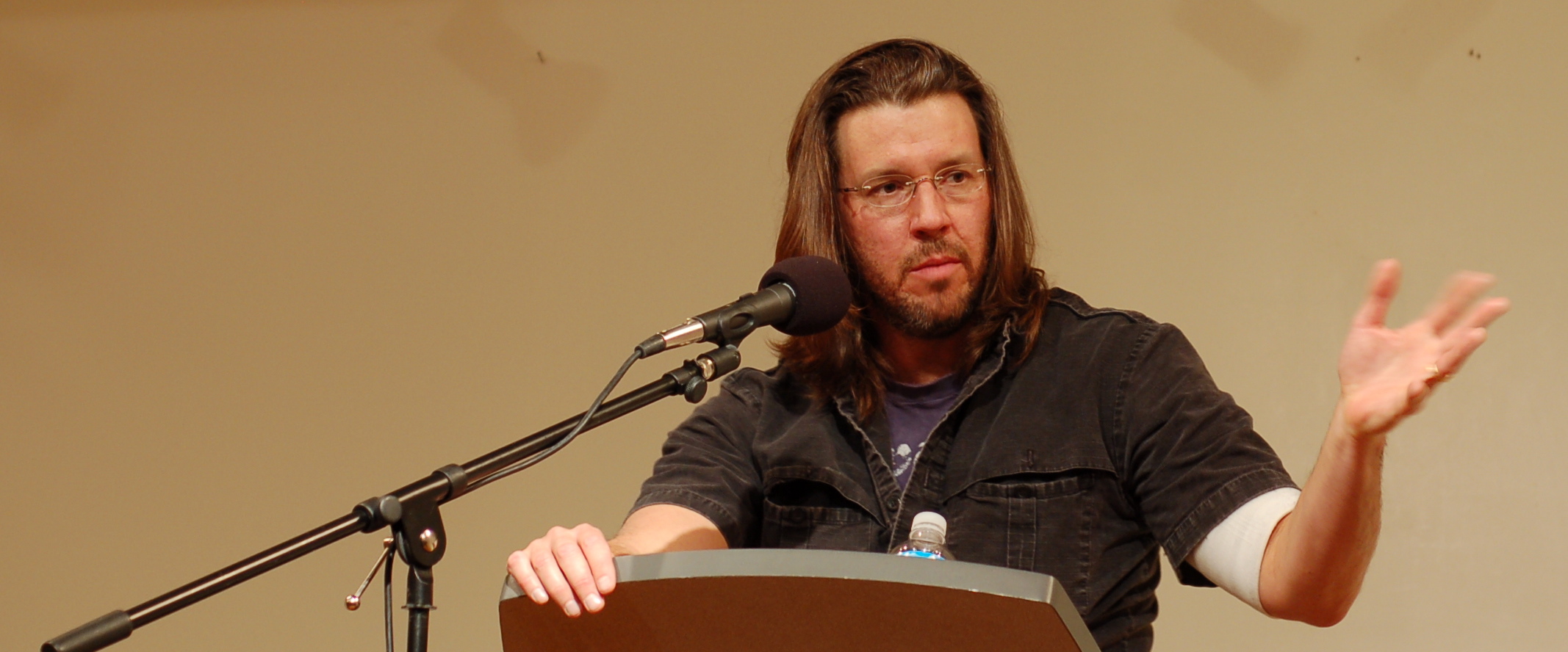
"Some colonies had laws against feeding lobsters to inmates more than once a week because it was thought to be cruel and unusual, like making people eat rats." (Image by Steve Rhodes.)
The late David Foster Wallace has previously unpublished fiction in the New Yorker this week, but here’s an interesting fact from his landmark 2004 food writing, “Consider the Lobster“:
“Up until sometime in the 1800s, though, lobster was literally low-class food, eaten only by the poor and institutionalized. Even in the harsh penal environment of early America, some colonies had laws against feeding lobsters to inmates more than once a week because it was thought to be cruel and unusual, like making people eat rats. One reason for their low status was how plentiful lobsters were in old New England. ‘Unbelievable abundance’ is how one source describes the situation, including accounts of Plymouth pilgrims wading out and capturing all they wanted by hand, and of early Boston’s seashore being littered with lobsters after hard storms—these latter were treated as a smelly nuisance and ground up for fertilizer. There is also the fact that premodern lobster was often cooked dead and then preserved, usually packed in salt or crude hermetic containers. Maine’s earliest lobster industry was based around a dozen such seaside canneries in the 1840s, from which lobster was shipped as far away as California, in demand only because it was cheap and high in protein, basically chewable fuel.”
Tags: David Fpster Wallace
I would punt this creepy thing clear across the mall, but I wonder if some people would like the “attention.” Regardless: yikes! (Thanks Singularity Hub.)
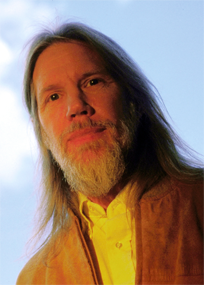
"A mathematician, a former peacenik, and an enemy of exclusive government control of encryption systems."
Whitfield Diffie created a tool to help him explain a product, but it was the tool itself that was the great product. To understand how Diffie never made a cent from his creation of the game-changing invention of PowerPoint, read this 2001 article by the excellent New Yorker writer Ian Parker. An excerpt:
“In 1980, though, it was clear that a future of widespread personal computers—and laser printers and screens that showed the very thing you were about to print—was tantalizingly close. In the Mountain View, California, laboratory of Bell-Northern Research, computer-research scientists had set up a great mainframe computer, a graphics workstation, a phototypesetter, and the earliest Canon laser printer, which was the size of a bathtub and took six men to carry into the building—together, a cumbersome approximation of what would later fit on a coffee table and cost a thousand dollars. With much trial and error, and jogging from one room to another, you could use this collection of machines as a kind of word processor.
Whitfield Diffie had access to this equipment. A mathematician, a former peacenik, and an enemy of exclusive government control of encryption systems, Diffie had secured a place for himself in computing legend in 1976, when he and a colleague, Martin Hellman, announced the discovery of a new method of protecting secrets electronically—public-key cryptography. At Bell-Northern, Diffie was researching the security of telephone systems. In 1981, preparing to give a presentation with 35-mm. slides, he wrote a little program, tinkering with some graphics software designed by a B.N.R. colleague, that allowed you to draw a black frame on a piece of paper. Diffie expanded it so that the page could show a number of frames, and text inside each frame, with space for commentary around them. In other words, he produced a storyboard—a slide show on paper—that could be sent to the designers who made up the slides, and that would also serve as a script for his lecture. (At this stage, he wasn’t photocopying what he had produced to make overhead transparencies, although scientists in other facilities were doing that.) With a few days’ effort, Diffie had pointed the way to PowerPoint.” (Thanks Longform.)
••••••••••
More about Whitfield Diffie from Steven Levy: “Mary Fischer loathed Whitfield Diffie on sight. He was a type she knew all too well, an MIT brainiac whose arrogance was a smoke screen for a massive personality disorder. The year of the meeting was 1969; the location a hardware store near Central Square in Cambridge, Massachusetts. Over his shoulder he carried a length of wire apparently destined for service as caging material for some sort of pet. This was a typical purchase for Diffie, whose exotic animal collection included a nine-foot python, a skunk, and a rare genetta genetta, a furry mongooselike creature whose gland secretions commonly evoked severe allergic reactions in people. It lived on a diet of live rats and at unpredictable moments would nip startled human admirers with needlelike fangs.”
Tags: Ian Parker, Mary Fischer, Steven Levy, Whitfield Diffie
From the New York Times obituary of Bacon, one of the most divisive artists ever: “Mr. Bacon first gained acclaim in 1945, when he exhibited ‘Three Studies for Figures at the Base of the Crucifixion‘ at the Lefevre Gallery in London. His angrily drawn image of writhing half-human, half-animal forms, perched atop pedestals and set in claustrophobic spaces, seemed to epitomize the grim spirit of postwar England and established the painter immediately as a master of the macabre. That reputation was to be reinforced time and again by the screaming popes, butchered carcasses and distorted portraits that Mr. Bacon turned out over the next four and a half decades.” (Thanks Live Leak.)
Tags: Francis Bacon
Please help me with “nothing”! – $1 (Brooklyn)
Please help me with nothing!
i dont need anything from you!
i need only an IDEA!
I am looking for a good business idea from where i can make a little income so if you think from “anythink” what you think that i can earn money, please do a favor & email me back with the idea
if you know from any item or service what is a big demend & nobody offer this, that can be for me a great thing to start.
UPDATE: Popular Science made a couple of crucial errors in its original story about Dr. Atala’s bio-printer presentation at TED. Thanks to Karen Richardson, who does publicity for Wake Forest, for sending me the corrections:
“Reports in the media that Dr. Anthony Atala printed a real kidney at the TED conference in Long Beach, Calif., are completely inaccurate. At the conference, Dr. Atala used a new type of technology to print a kidney-shaped mold and explained how one day – many years from now – the technology might be used to print actual organs.
At the conference, Atala was reunited with a former patient who received a laboratory-engineered bladder 10 years ago. News reports are incorrectly saying that he received a printed kidney.”
••••••••••
Bio-printing replacement organs and tissue is coming sooner than later, and that’s a great thing, since kidneys in particular are in great demand and short supply. Yesterday surgeon Anthony Atala of Wake Forest took the TED stage at Long Beach and “printed” a working human kidney. It’s a stunner, but the process has been in the testing phase for a decade. An excerpt from an Independent story:
“College student Luke Massella was among the first people to receive a printed kidney during experimental research a decade ago when he was just 10 years old.
He said he was born with Spina Bifida and his kidneys were not working.
‘Now, I’m in college and basically trying to live life like a normal kid,’ said Massella, who was reunited with Atala at TED.
‘This surgery saved my life and made me who I am today.'”
••••••••••
No footage yet of Dr. Atala’s demonstration from yesterday, but here he is discussing the topic at TED in 2010.
Tags: Anthony Atala, Luke Massella
Not a single woman, sadly, but James Baldwin, Marlon Brando, Harry Belafonte, Charlton Heston, Joseph L. Mankiewicz and Sidney Poitier!!! (Thanks Open Culture.)
Tags: Charlton Heston, Harry Belafonte, james Baldwin, Joseph L. Mankiewicz and Sidney Poitier, Marlon Brando

"Ezra F. Merrill, the wealthy owner of toboggan slides at Coney Island and roller coaster devices." (Image by Buchhändler.)
Ezra F. Merrill was one of the key forces behind the introduction of the toboggan slide to Coney Island, and he also built some popular roller coasters. But his rides weren’t always fun and safe and resulted in numerous injuries and deaths, with scalps lost and skulls crushed. As reported in the May 10, 1899 Brooklyn Daily Eagle, the scream machines even eventually claimed the aged proprietor himself, who was something of an eccentric figure. An excerpt:
“The death of Ezra F. Merrill, the wealthy owner of toboggan slides at Coney Island and roller coaster devices, will be the subject of an investigation by Coroner Burger. Dr. Byrne, the Register of Vital Statistics of the local Health Office, declined to accept the death certificate of the attending physician on the ground that death was due to traumatic or violent origin.
Merrill, who was a character, attended to all his business interests personally. It is said that he was a millionaire, but he dressed like a laborer and ate at the cheapest restaurants on the island. He was trying a new roller coaster car one day last week when it slipped from its moorings and struck him in the stomach. The result was that peritonitis developed and that was given as the cause of death.”
Tags: Coroner Burger, Dr. Byrne, Ezra F. Merrill
Kevin Kelly defines “technology” on his blog:
“I want to suggest a theory for technology, a framework that might provide a logic and context for this parade of new things in our lives. But I have to start with the fact that we have a warped idea of what technology is. A lot of us tend to think that technology is ‘anything that was invented after you were born.’ Or technology is: ‘anything that doesn’t work yet.’ As if only the new is what we are talking about.
But of course technology includes old inventions, like clocks and levers, and ancient materials that work very well, like concrete and bricks. The bulk of technology in our lives was invented long before we were born. Ordinary technology also contains intangible ‘stuff’ that we usually don’t see such as calendars, bookkeeping principles, law, and software. It includes large complex things like social organizations and cities. Technology is all this, the old, the invisible, the large and the new — the accumulated usefulness that our minds invent.”
Tags: Kevin Kelly
From the 1940s until the mid-1970s, a blind Manhattan street musician nicknamed “Moondog” used to stand on Sixth Avenue and 53rd Street, dressed like a Viking. At a time when outré characters were all over the city, he just seemed like one more eccentric. But Moondog (real name: Louis Thomas Hardin) also happened to be an acclaimed classical composer. Filmmaker Holly Elson is hoping to make a documentary about the late musician, who passed away in 1999, and this is the very earliest piece of it. (Thanks Documentarian.)
Tags: Holly Elson, Louis Thomas Hardin, Moondog

""Despite his name and appearance, Hate isn't what you might expect from a homeless person." (Image by TwoWings.)
Even by Berkeley’s very relaxed standards of behavior, homeless philosopher Mark Hawthorne stands out. Known locally as “Hate Man,” he believes in sharing negative feelings towards others, even while otherwise treating them kindly. He always has a “fuck you” at the ready for anyone who crosses his path, but he had a much larger vocabulary when he was a reporter for the New York Times from 1961 to 1970. How he get from his old life to his current one is the subject of a story by Kathleen Richards and Sandeep Abraham in the East Bay Express. An excerpt:
“Despite his name and appearance, Hate isn’t what you might expect from a homeless person — especially one that greets others with ‘fuck you’ and eats out of garbage cans. He is kind, and his gentle eyes belie the hardened life of decades spent on the streets. He is also thoughtful and clearly educated — not to mention quite a talker.
Some of his followers say they help keep the peace in People’s Park. Hate says he doesn’t like to take handouts from anyone, doesn’t drink, and no longer does drugs. His only vices appear to be Virginia Slims cigarettes, the smoke of which engulfs him in a perpetual halo, and coffee, which he carries in a glass jar and loads up with sugar.
How he went from reporting for The New York Times to leading homeless people in Berkeley as a pseudo prophet involves a long, strange trip and a string of failed relationships. It may sound like a fall from grace, but Hate says he’s exactly where he’s always wanted to be.” (Thanks Longreads.)
Tags: Hate Man, Kathleen Richards, Mark Hawthorne, Sandeep Abraham
Your student moving help for my beer (Brooklyn or NYU)
Hi all – I’m a female NYU student who needs two male students to move some heavy movie equipment for my student film. I have no cash, but through a weird cool connection I can hook you up with beer. A suitcase each man for the move. Same day beer pay.
Demand has not yet matched supply. (Thanks IEEE Spectrum.)

Kirkpatrick's article details Jack Dorsey's new company, Square, which has created a way for individuals to accept credit card payments with the aid of a cell phone attachment. (Image by Joi Ito.)
An explanation for how Twitter was created, from David Kirkpatrick’s smart Vanity Fair article about Jack Dorsey, the company’s founder and deposed CEO:
“Little Jack Dorsey was obsessed with maps of cities. He papered his walls with maps from magazines, transit maps, maps from gas stations. His parents had resisted joining the emigration to the suburbs, and their shy, skinny son supported them by becoming a passionate proponent of city life. He was mesmerized by locomotives, police cars, and taxis. He would drag his younger brother Danny to nearby rail yards, where they waited just to videotape a passing train.
When their father brought home the family’s first computer that year—an IBM PC Jr.—Jack immediately took to it. He had a talent for both math and art, and began to design his own maps using a graphics program. Soon, he taught himself programming to learn how to make little dots—representing trains and buses—scoot around the maps. He spent hours listening to police and ambulance radio frequencies, then plotted the emergency vehicles as they moved toward an accident or a hospital. As he evolved into a talented teenage programmer, he came to an oddly poetic view of this precise, orderly urban grid. ‘I wanted to play with how the city worked, so I could see it,’ Dorsey recalls.
His obsession with cities—and with programming—never abated. By early 2006, having dropped out of N.Y.U. and bouncing between jobs, he found himself working for a San Francisco software start-up called Odeo, which was going nowhere. One day he proposed an idea to his boss based on a notion that Dorsey had been noodling over for years. He was fascinated by the haiku of taxicab communication—the way drivers and dispatchers succinctly convey locations by radio. Dorsey suggested that his company create a service that would allow anyone to write a line or two about himself, using a cell phone’s keypad, and then send that message to anyone who wanted to receive it. The short text alert, for him, was a way to add a missing human element to the digital picture of a pulsing, populated city.”
••••••••••
Jack Dorsey’s first computer, the IBM PC Jr.
Tags: David Kirkpatrick, Jack Dorsey



